What is On-Page SEO and Why Does it Matter?
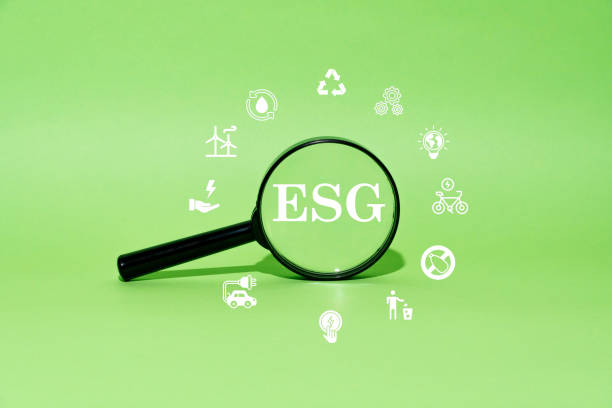
#On-Page SEO, also known as On-Page SEO, is a set of actions you take within your website to improve your site’s ranking in Google search results.
These actions include optimizing content, site structure, title tags, meta descriptions, and more.
Unlike off-page SEO, which focuses on link building and domain authority, on-page SEO focuses directly on the quality and relevance of your content to user searches.
The importance of On-Page SEO is that search engines like Google rank websites based on various factors.
These factors include the relevance of the content to the keywords searched, the user experience of the site, the page loading speed, and more.
By optimizing these factors within your site, you can help search engines better understand your content and improve your site’s ranking in search results.
In fact, on-page SEO is the most fundamental part of the SEO strategy, and without it, off-page SEO efforts alone cannot be effective.
Search engines are constantly changing their algorithms, and on-page SEO is a way to keep up with these changes.
In other words, On-Page SEO builds a solid foundation for your website to be seen in the online world and helps you attract more organic traffic.
This organic traffic consists of visitors who naturally reach your site through Google searches and are more likely to become customers.
On-page SEO means creating a site that is attractive and useful for both search engines and users.
Are you annoyed by losing customers due to the outdated appearance or slow speed of your online store? The expert team at Rasaweb solves these problems with professional online store design!
✅ Increase customer trust and your brand’s credibility
✅ Blazing speed and excellent user experience
Get a free consultation with Rasaweb now ⚡
Keyword Research – The Main Foundation of On-Page SEO
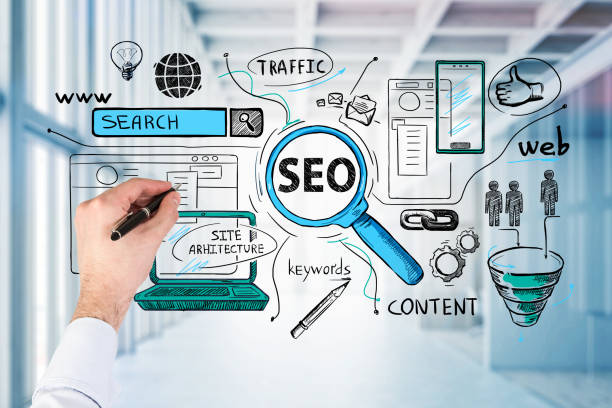
Keyword research is the process of identifying the words and phrases that users search for in search engines to find information related to your business.
These keywords form the basis of your SEO strategy and help you create content that is attractive to users and search engines.
To do keyword research, you can use various tools such as Google Keyword Planner, Ahrefs, SEMrush, and Keywordtool.io.
These tools provide you with information such as search volume, competition level, and related keywords.
Your goal should be to find keywords that have high search volume and, at the same time, the competition for them is not too high.
You should also look for Long-Tail Keywords, which are more precise search terms and usually have a higher conversion rate.
Choosing the right keywords helps you to move in the right direction.
After finding the desired keywords, you should use them naturally and relevantly in your content.
Avoid using too many keywords (Keyword Stuffing), as this can get your site penalized by Google.
Optimization for On-Page SEO is impossible without a proper list of keywords.
Optimizing Title Tags & Meta Descriptions

Title Tags and Meta Descriptions are two important elements in SEO that are displayed in Google search results.
The title is the main title of your page, and the meta description is a short summary of the page’s content.
These two elements help users understand what your page is about and whether it is useful to them.
Also, search engines use this information to better understand the content of the page.
To optimize title tags and meta descriptions, you should use relevant keywords and write them in a way that is attractive and persuasive.
The title length should be less than 60 characters, and the meta description length should be less than 160 characters.
Try to highlight the benefits of visiting your page in the title and meta description, and use a Call-to-Action (CTA) to encourage users to click.
Efforts for On-Page SEO are useless without optimizing titles and meta descriptions.
Remember that the title and meta description should be unique for each page of your website.
Avoid using duplicate title tags and meta descriptions, as this can confuse search engines and lower your site’s ranking.
| Feature | Description | Best Practice |
|---|---|---|
| Title Length | Number of characters in the page title | Less than 60 characters |
| Meta Description Length | Number of characters in the meta description | Less than 160 characters |
| Keywords | Use of relevant keywords | Should be used naturally in the title and description |
| Uniqueness | The title and description of each page must be unique | Avoid copying titles and descriptions |
Content Optimization
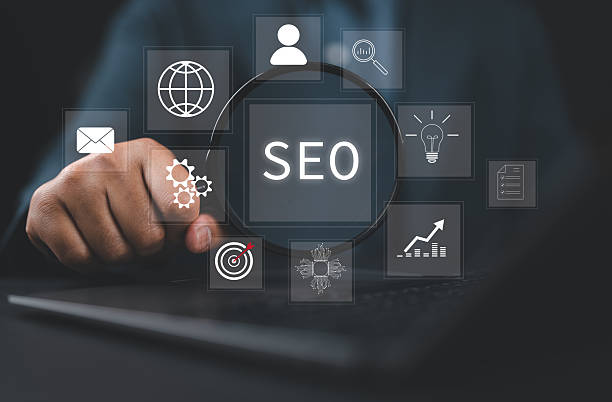
Content is king! This phrase is very common in the world of SEO and means that high-quality and valuable content is the most important factor in ranking your site in search results.
Content optimization means producing content that is both useful and engaging for users and understandable and relevant for search engines.
For content optimization, you should pay attention to the following points:
Content Quality Your content should provide accurate, complete, and up-to-date information.
Avoid writing copied or duplicate content.Content Relevance Your content should be relevant to the keywords that users search for.
Avoid using too many keywords and try to write your content naturally and fluently.Content Structure Your content should have a proper structure and use titles, subtitles, paragraphs, and lists correctly.
This helps users and search engines better understand your content.Images and Videos Using images and videos can make your content more attractive and interactive.
Be sure to use the Alt tag for your images to help search engines understand them.
Keep in mind that content should not only be optimized for search engines, but should also meet the needs of users.
Content Readability Your content should be readable and understandable.
Use short and simple sentences and avoid using technical and complex terms.
Using a proper font and font size can also help with content readability.
Ultimately, your goal should be to produce content that users enjoy reading and gain useful information from.
On-Page SEO is linked to strong content.
Did you know that the first impression customers have of your company is your website? Multiply the credibility of your business with a powerful company website from Rasaweb!
✅ Exclusive and eye-catching design tailored to your brand
✅ Improved user experience and increased customer acquisition
⚡ Get a free consultation!
URL Structure Optimization

The URL structure or address of your website pages plays an important role in SEO and user experience.
A proper URL structure helps search engines better understand the content of your pages and also helps users easily navigate your site.
For URL structure optimization, you should pay attention to the following points:
Simplicity and Readability Your URL should be simple, short, and readable.
Avoid using capital letters, random numbers, and special characters.Keywords Try to use keywords related to the content of the page in your URL.
This helps search engines understand what your page is about.Stability After publishing a page, do not change its URL.
If you have to change the URL, be sure to use a 301 redirect to direct users and search engines to the new address.Use of Hyphen Use a hyphen (-) to separate words in the URL.
Avoid using underscores (_).
Proper URL structure is an important aspect of On-Page SEO.
Categorization URLs should reflect the site’s categorization structure.
For example, if a product page is in the “Clothing” category and the “Women’s” subcategory, its URL should be something.com/clothes/womens.
Image Optimization
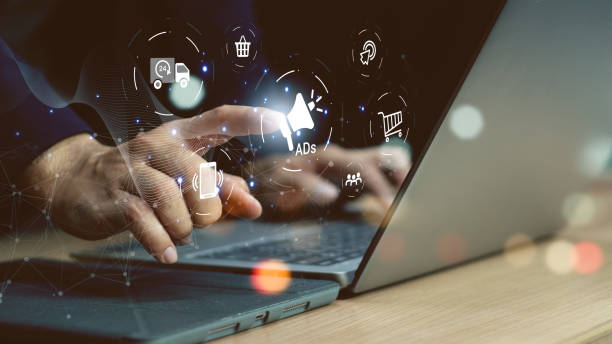
Images play an important role in attracting user attention and improving user experience.
However, unoptimized images can slow down your page loading speed and negatively impact your site’s SEO.
To optimize images, you should pay attention to the following points:
Choose the Right Format For images, use JPEG format for photos and PNG format for graphic images.Image Compression Before uploading images, compress them to reduce their size.
You can use online image compression tools.Use of Alt Tag Write a proper and descriptive Alt tag for each image.
The Alt tag helps search engines understand the image and display it in image search results.Choose the Right File Name Before uploading the image, change its file name to a proper name related to the content of the image.
Avoid using random and meaningless file names.Proper Dimensions Display images with proper dimensions on your site.
Avoid displaying images larger than needed.
Image optimization has a significant impact on On-Page SEO.
Using low-quality images can also have a negative impact on user experience.
Always try to use high-quality images and at the same time minimize their file size.
Website Speed Optimization

The loading speed of website pages is one of the important factors in your site’s ranking in search results and user experience.
Users expect your website pages to load in less than 3 seconds.
If your page loading speed is slow, users may leave your site and go to other sites.
To optimize website speed, you can take the following actions:
Image Optimization Unoptimized images can increase the size of your pages and slow down their loading speed.Browser Cache Activation By enabling browser cache, your site’s static files, such as images and CSS files, are stored in the user’s browser, and pages load faster on subsequent visits.Using CDN (Content Delivery Network) is a content distribution network that stores your site’s files on different servers around the world.
By using CDN, users receive files from the server closest to them, and the page loading speed increases.Code Optimization Optimize your site’s HTML, CSS, and JavaScript codes.
Use the removal of unnecessary codes and code compression.Choose the Right Host Choose a suitable host with high speed and stability.
Proper loading speed is one of the main principles of On-Page SEO.
You can use tools like Google PageSpeed Insights and GTmetrix to check your site’s speed and get suggestions for improving it.
| Factor | Importance | Actions |
|---|---|---|
| Image Optimization | High | Compression, choosing the right format, using the Alt tag |
| Browser Cache | Medium | Enabling browser cache |
| Using CDN | High | CDN implementation |
| Code Optimization | Medium | Removing unnecessary codes, code compression |
| Proper Host | High | Choosing a host with high speed and stability |
Responsive Design Optimization
![]()
With the increasing use of mobile devices, optimizing website responsiveness for SEO and user experience has become very important.
A responsive website automatically adapts to the screen size of different devices such as mobile phones, tablets, and computers.
Google also gives more importance to responsive websites and gives them a better ranking in mobile search results.
To optimize responsiveness, you can use CSS frameworks like Bootstrap.
These frameworks provide a set of ready-made CSS codes that help you easily design a responsive website.
Also, you should make sure that your images and videos are also responsive and are displayed correctly on different devices.
On-Page SEO in a mobile-centric world is meaningless without responsive design.
In addition, you should check your website loading speed on mobile devices as well and take necessary actions to improve it if needed.
Google provides a tool called Mobile-Friendly Test that you can use to check the responsiveness of your website.
Do visitors to your online store leave before making a purchase? Don’t worry anymore! With Rasaweb’s professional online store design services, solve the problem of not converting visitors into customers forever!
✅ Significant increase in conversion rate and sales
✅ Unique and attractive user experience
⚡ Contact us now for a free consultation!
Internal Linking Structure
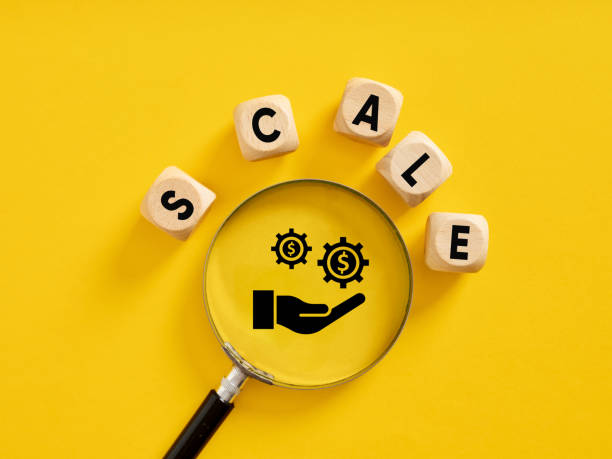
Internal linking means creating links between different pages of your website.
This helps search engines better understand your site structure and also helps users easily navigate your site.
Proper internal linking can improve the ranking of important pages of your site in search results and increase your site traffic.
For internal linking, you should pay attention to the following points:Link Relevance Links should be created between relevant pages.
For example, if you are talking about “On-Page SEO” on a page, you can link to other pages that talk about “Keyword Research” or “Content Optimization”.Use of Proper Anchor Text Anchor Text is the text that is used as a link.
Use descriptive and relevant anchor text for the destination page.
Avoid using generic anchor text such as “Click here”.Proper Number of Links Create a proper number of internal links on each page.
Avoid creating too many links, as this can confuse users and search engines.
On-Page SEO requires a strong internal linking strategy.
Link to Important Pages Link from less important pages to important pages of your site.
This helps search engines identify the important pages of your site and give them a better ranking in search results.
Sitemap and Robots.txt File
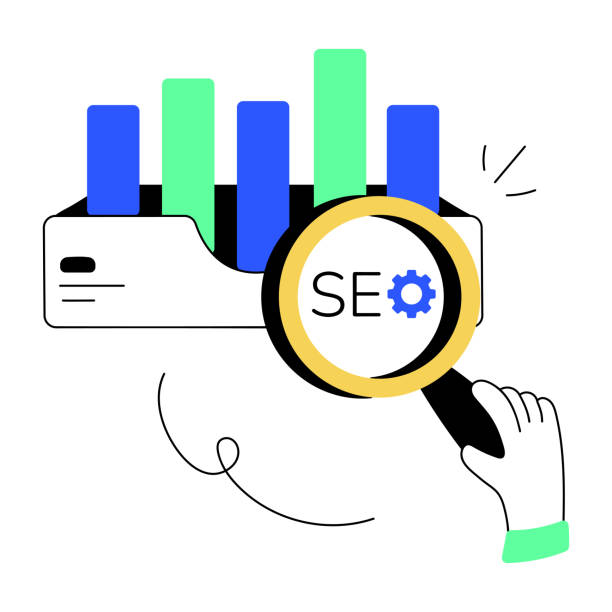
A sitemap is an XML file that lists all the pages of your website and helps search engines better crawl your site.
The Robots.txt file is a text file that tells search engines which pages of your site they should not crawl.
Creating and optimizing the sitemap and Robots.txt file are among the important actions in technical SEO.
The sitemap should be updated regularly and include all new pages of your site.
You can register your sitemap in Google Search Console so that Google can easily find it.
The Robots.txt file should be located in the root of your site and prevent search engines from accessing unnecessary pages such as login pages and shopping cart pages.
Proper settings for these two files are essential for On-Page SEO.
In summary, the sitemap helps search engines find all the pages of your website, while the Robots.txt file tells search engines which pages they should not check.
Make sure both files are set up correctly to help improve your site’s SEO.
By using these two important tools correctly, you can ensure that Google properly examines and indexes your site.
Frequently Asked Questions
| Question | Answer |
|---|---|
| What is On-Page SEO? | It refers to a set of actions that are performed within a website to improve ranking in search engines. |
| Why is On-Page SEO important? | Because it helps search engines better understand your content and site structure and improves the user experience. |
| What are the most important elements of On-Page SEO? | Title and meta descriptions, keywords, URL structure, quality content, image optimization, internal linking, and site speed. |
| How to optimize the Title Tag and Meta Description? | The title should include the main and attractive keyword, and the meta description should be a persuasive summary of the content with relevant keywords. |
| What is the role of keywords in On-Page SEO? | Keywords help search engines understand what the page’s content is about and should be used naturally and intelligently in the text. |
| How is image optimization done for On-Page SEO? | By compressing the size, using a descriptive file name, and filling the Alt tag with relevant descriptions and keywords. |
| What is internal linking and what is its use? | Connecting different pages of the site to each other. This helps to distribute page authority and improve the crawling of search engines. |
| What is the importance of site loading speed in On-Page SEO? | High speed improves the user experience and is one of the important ranking factors for search engines like Google. |
| What effect does the site being responsive (Mobile-Friendliness) have on On-Page SEO? | Considering the increase in mobile users, being responsive is necessary to provide a good user experience on all devices and to prioritize Google’s mobile indexing. |
| What are the important factors related to content in On-Page SEO? | Originality, quality, comprehensiveness, readability, proper use of headings (H1, H2,…) and regular content updates. |
And other services of Rasa Web Advertising Agency in the field of advertising
Smart Customer Journey Map: A creative platform to improve online growth by optimizing key pages.
Smart Brand Identity: Designed for businesses looking to increase site visits by optimizing key pages.
Smart Brand Identity: Professional optimization to increase site visits by using user experience customization.
Smart Linking: Designed for businesses looking to manage campaigns through the use of real data.
Smart Marketplace: Professional optimization for digital branding by using the use of real data.
And more than hundreds of other services in the field of Internet advertising, advertising consulting and organizational solutions
Internet Advertising | Advertising Strategy | Advertorial
Resources
On-Page SEO Training: Everything You Need to Know About On-Page SEO
,What is On-Page SEO or On-Page SEO? | Virgil
,What is On-Page SEO? 0 to 100 On Page SEO Training for 2024
,What is On-Page SEO? Website optimization training for search engines
? To advance your business in the digital space and achieve the peaks of success, experience exclusive website design and comprehensive digital marketing services with Rasaweb Afrin.
📍 Tehran, Mirdamad Street, next to the Central Bank, South Kazerun Alley, Ramin Alley No. 6
“`




